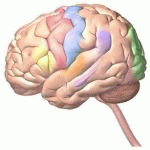Neurology
|
22 december 2014 06:18:15 |
| Interactions between cognitive and sensory load while planning and controlling complex gait adaptations in Parkinson¿s disease (BMC Neurology) |
|
Tweet Background:
Recent research has argued that removal of relevant sensory information during the planning and control of simple, self-paced walking can result in increased demand on central processing resources in Parkinson?s disease (PD). However, little is known about more complex gait tasks that require planning of gait adaptations to cross over an obstacle in PD.
Methods:
In order to understand the interaction between availability of visual information relevant for self-motion and cognitive load, the current study evaluated PD participants and healthy controls while walking toward and stepping over an obstacle in three visual feedback conditions: (i) no visual restrictions; (ii) vision of the obstacle and their lower limbs while in complete darkness; (iii) vision of the obstacle only while in complete darkness; as well as two conditions including a cognitive load (with a dual task versus without a dual task). Each walk trial was divided into an early and late phase to examine changes associated with planning of step adjustments when approaching the obstacle.
Results:
Interactions between visual feedback and dual task conditions during the obstacle approach were not significant. Patients with PD had greater deceleration and step time variability in the late phase of the obstacle approach phase while walking in both dark conditions compared to control participants. Additionally, participants with PD had a greater number of obstacle contacts when vision of their lower limbs was not available specifically during the dual task condition. Dual task performance was worse in PD compared to healthy control participants, but notably only while walking in the dark regardless of visual feedback.
Conclusions:
These results suggest that reducing visual feedback while approaching an obstacle shifts processing to somatosensory feedback to guide movement which imposes a greater demand on planning resources. These results are key to fully understanding why trips and falls occur in those with PD. |
| 86 viewsCategory: Neurology |
 The efficacy and safety of cilostazol for the secondary prevention of ischemic stroke in acute and chronic phases in Asian population- an updated meta-analysis (BMC Neurology) The efficacy and safety of cilostazol for the secondary prevention of ischemic stroke in acute and chronic phases in Asian population- an updated meta-analysis (BMC Neurology)Chlamydia pneumoniae infection of monocytes in vitro stimulates innate and adaptive immune responses relevant to those in Alzheimer¿s disease (Journal of Neuroinflammation) 
|
| blog comments powered by Disqus |
MyJournals.org
The latest issues of all your favorite science journals on one page
The latest issues of all your favorite science journals on one page



